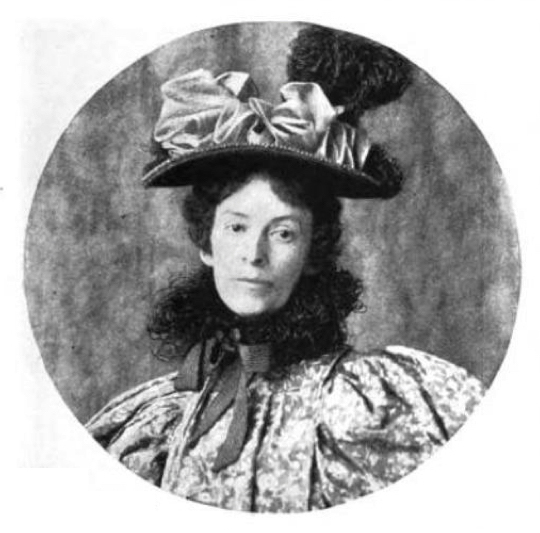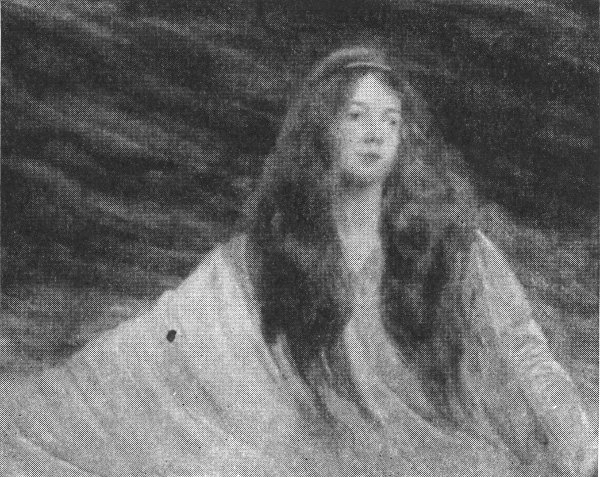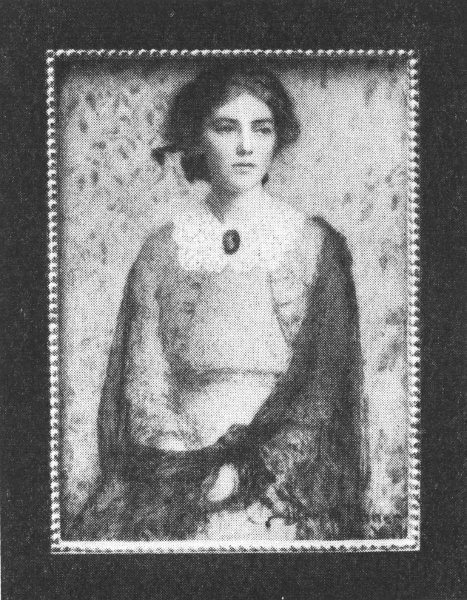The Mentor magazine was a serial that ran from the late nineteenth century to the early twentieth century. It was started and led by William David Moffat, who ran the underlying “Mentor Association.” Its motto, “Learn One Thing Every Day,” hinted at its structure – each edition of The Mentor was devoted to a specific topic. The Inherited Values blog covered the magazine in a comprehensive way, and described “The Mentor Association” as “rather like Moffat’s attempt at a think tank.” In this post, I mean not to offer a survey of The Mentor Magazine, but instead offer a look at one part of its January 15, 1917 issue on “American Miniature Painters.” Specifically, we will look at the section on Laura Coombs Hills, one of the notable American miniature painters of the late-nineteenth and early-twentieth centuries.
Who is Laura Coombs Hills?

Laura Coombs Hills, born in Massachusetts was an American painter who lived from 1859-1952. Wikipedia notes that she became a successful painter despite having limited formal training. Below, we will examine The Mentor’s 1917 profile of Ms. Hills. While reading, you should bear in mind that her career continued for quite a while longer after 1917. However, the Wikipedia article states that she painted few miniatures after 1920 due to poor eyesight.
The Mentor on Laura Coombs Hills’s Early Life
Ms. Hills was born in Newburyport, Massachusetts, on September 7, 1859. She briefly studied painting under Helen M. Knowlton at the Cowles Art School in Boston, and later at the Art Students’ League in New York.
Ms. Hills gained significant recognition as a painter in her day. She became a member of the Society of American Artists in 1897. Ms. Hills was made an associate of the National Academy in 1906. She was, in 1917, a member of the Boston Water Color Club, Copley Society, New York Women’s Art Club, and the American Society of Miniature Painters. Her work was displayed around the world.
The Mentor did not note that when Ms. Hills was elected to the Society of American Artists in 1897, she was the first miniature painter to receive the honor.
The Mentor on Laura Coombs Hills’s Start in Miniatures
The Mentor wrote that Ms. Hills began painting miniatures about two decades before 1917. “Up to that time she had dome some illustrating and decorative painting, worked on china, and some commercial designing.”
Ms. Hills was in England one time when a friend complimented her work and asked her why she did not try miniature painting. Although Ms. Hills was initially reluctant to take up miniatures, she procured ivory and found several young girls to serve as models.
Ms. Hills soon produced seven miniature paintings. She was surprised to find the work relatively easy after having previously understood painting miniatures to be difficult. Of course, as The Mentor observes, Ms. Hills had not been wrong that paining miniatures was difficult. “[U]ntil she undertook the work she was not aware that this special talent was her’s.” Once Ms. Hills got her start in miniatures, she was intent to continue. “She had a work of beauty to do and she know that she could do it well.”
The Mentor’s Evaluation of Ms. Hills as an Artist
The Mentor described Ms. Hills as “a favorite of lovers of miniature painting.” It observed that she had a “fine, fresh style of her own” “Her coloring is positive, and she seems undismayed in rendering any tone of dress or background or face.”
Ms. Hills had painted more than 200 miniatures as of 1917. The Mentor explained that she was primarily interested in painting people, “especially young people.” It described the people she painted as appearing “very real” and “distinct and individual.”
The Mentor viewed Ms. Hills’ miniatures as something more than portraits of the subjects. “They have a pictorial quality that gives them a very special charm and distinction.” For that reason, the editors wrote, “if the subjects that she has pictured in her miniatures had been rendered in oils on large canvases, ‘they would be found decorative and impressive.’”
Two Miniatures by Laura Coombs Hills
The Mentor included two black and white pictures of Ms. Hills’ paintings along with short descriptions of each.
Persis Blair

This miniature measures six-and-three-quarters inches high, and five-and-one-sixteenth inches wide. While our picture of Persis is in black and white, The Mentor provided a vivid description of the paintings and its colors:
It shows a child with brownish-red hair, wearing a dark shade of pink ribbon. Her dress, of the faded pink variety, wherein the lights approach flesh coloring and the shadows are silvery, merges into golden tints. The background of sofa and tapestry offers a variety of greens throughout, with a note of clear orange in the bit of cushion to the left of the child’s right arm. The floor and the arm of the sofa repeat the color of the hair. A few patches of blue and blue-green in the tapestry supply a relief for the colors of the figure and the cushions.
The Mentor on Laura Coombs Hills’s “Persis Blair”
I found some additional information about this lovely miniature on the website of the Metropolitan Museum of Art. The subject was Persis Blair, a young girl who was born in Boston in 1895 and died at the age of 7. Ms. Hills painted her in 1901, using watercolor on ivory. You can see a full color version of Persis Blair in a book preview of “American Portrait Masters in The Metropolitan Museum of Art.” It is as pretty as The Mentor describes, and a touch haunting with the knowledge that the subject died so young so soon after she sat for Ms. Hills.
The Goldfish

The Mentor included a picture of a second painting by Ms. Hills titled “The Goldfish.” It described it as follows:
‘The Goldfish’ is another beautiful miniature by Miss Hills, in which her treatment of the bright golden tresses of a girl, her gown and the illusive tones of the background, denote the artist to be a colorist of the first rank.
The Mentor on Laura Coombs Hills’s “The Goldfish”
Additional Miniature – Girl With a Green Shawl by Helen M. Turner
The Mentor includes many fine miniatures and facts in its January 1917 issue. One of the miniatures that struck me after viewing Persis was a work by Helen M. Turner of a girl in a green shawl.

The Mentor does not include a profile of Ms. Turner, but she was a contemporary of Ms. Hills, living from 1858-1958. She was born in Kentucky but moved with her family to Louisiana in the aftermath of the Civil War. She relocated to New York in 1895, where she lived until returning to Louisiana in 1920.
The Mentor does not include commentary on Ms. Turner’s painting of a young lady in a green shawl, but it is quite pretty in black and white. It is even prettier in color, with special attention being owed to Ms. Turner’s intricate depiction of her subject’s eyes.
A Miniature Conclusion (Pun Intended)
I had never heard of The Mentor before discovering it shortly before writing the instant content. It seems like an interesting magazine – fully devoting each issue to one subject of interest or another. This issue provided a sort of time capsule, showing some views of the preeminent American miniature painters of the day. Perhaps I will turn to The Mentor again in the future for content on some miscellaneous subject or another. If you enjoyed the aesthetic works of Ms. Hills and Ms. Turner as I did, there are plenty of depictions of their miniatures available online and in artbooks.